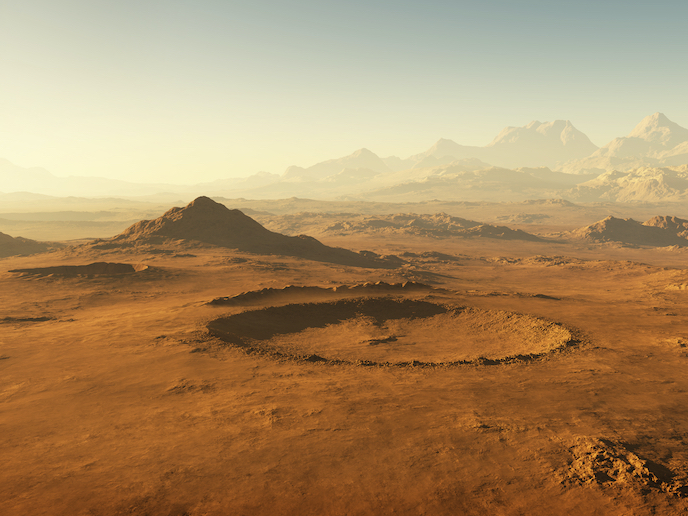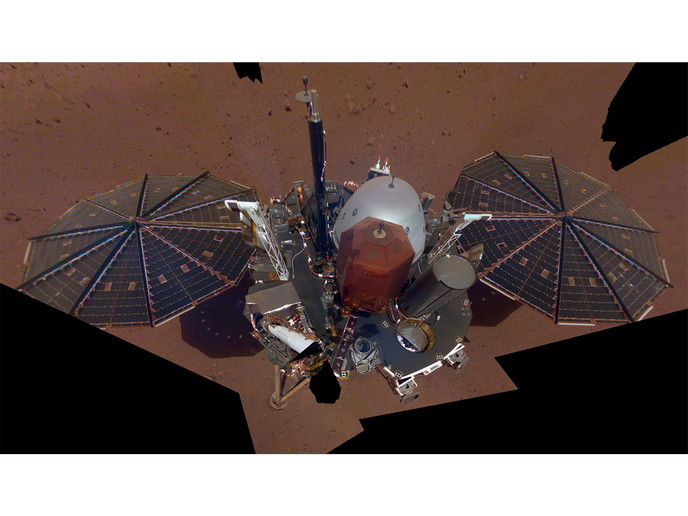Geology unlocks secrets to Mars’s watery past
Liquid bodies on the surface of Mars might have all disappeared, but evidence of a watery past is etched into the planet. “Since the early 1970s, scientists have discovered large valleys and channels stretching for thousands of kilometres,” explains Marie Skłodowska-Curie postdoctoral fellow Francesco Salese, who worked on the WET MARS project at the Faculty of Geosciences at Utrecht University, the Netherlands. “These findings completely changed how we imagined Mars.” Recent discoveries have also shown that water is retained under the surface, close to the poles. It is also stored within ice and abundant water-rich materials such as clay minerals and sulfates.
Recreating wet Mars
Building on these findings, the WET MARS project wanted to reconstruct the conditions that once existed on Mars, and further understand the hydrogeological cycle that produced the complex channel systems found on the planet’s surface. This research was undertaken with the support of the Marie Skłodowska-Curie Actions programme. Orbital data allowed the project team to examine, through detailed high-resolution architectural analysis, a large (1 500 m by 200 m) outcrop on the planet, and to make reliable palaeoenvironmental interpretations based on sedimentary-stratigraphic evidence. Salese also participated in experiments at Utrecht University using frozen subsoil and numerical modelling. This enabled him to come up with new hypotheses for how late Martian fluvial systems were formed, as well as the role of thermal and mechanical erosion. “From all this, I was able to identify some of the fluid dynamics related to Martian fluvial deposits,” he says. “From the large outcrop of siliciclastic sediments on Mars, I found the first evidence of extensive rivers preserved in an exposed cliff face.” The project also allowed the team to estimate the minimum lifespan of what was once the Jezero delta, a region of Mars that will be the landing site of the NASA Perseverance Rover, scheduled for early 2021.
Bringing Mars to life
The WET MARS project has helped to bring the distant past of our neighbour planet back to life. “The evidence we found points to periods in Mars’s past of prolonged water discharge,” adds Salese. “This is consistent with a precipitation-driven hydrological cycle some 3.7 billion years ago.” This conclusion aligns with previous arguments for the prolonged presence of water on the Martian surface. Salese demonstrated sustained river deposition – where material transported by rivers is deposited – again, 3.7 billion years ago. “Such perennially flowing rivers would require an environment capable of maintaining large volumes of water for extensive periods time,” Salese continues. “This is more in line with slower climatic change, and less in line with catastrophic hydrologic events.” Evidence of a long-lived watery landscape, Salese believes, could prove critical in our search for ancient life on the planet. “Our results could help planetary missions to better understand fluvial activity and its duration on Mars,” says Salese. “The NASA Perseverance Rover and the ESA Rosalind Franklin rover teams for example will have a better idea of what to look for. This could increase their chances of finding traces of life.” Following completion of the WET MARS project, Salese intends to continue his studies of Martian and Terrestrial sedimentary geology. “This project provided a unique opportunity to take a serious sedimentological look at Mars,” he notes. “I hope that what we’ve done will serve to emphasise even more the importance of geology in planetary exploration. One cannot be a good planetary geologist without first being a good terrestrial geologist.”
Keywords
WET MARS, Mars, planet, geology, hydrogeological, sedimentary, NASA, ESA







